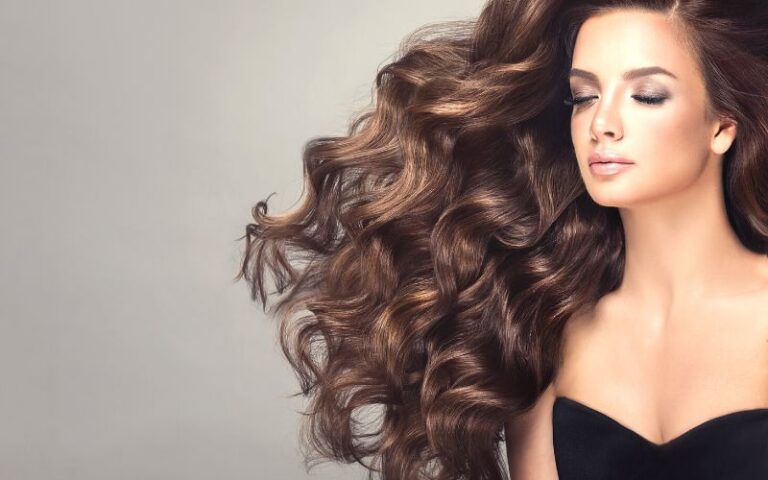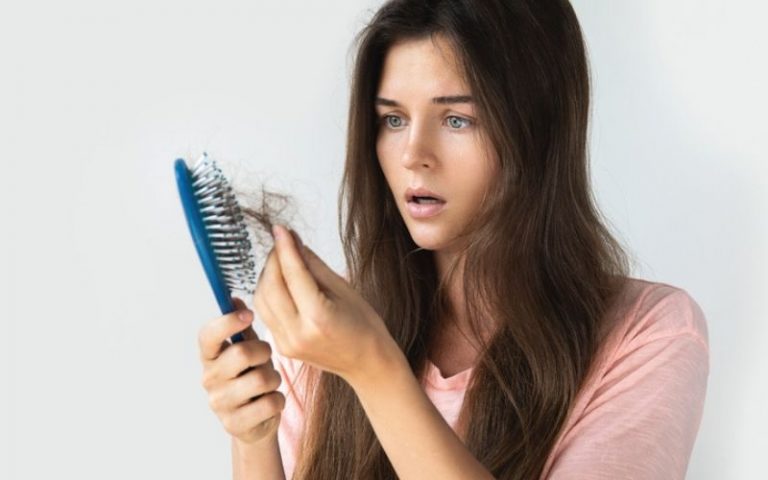Baldness And Hair Loss: Everything You Need To Know

Baldness and hair loss can dramatically affect women’s and men’s self-esteem. Some women feel that hair fall makes them unattractive and aged. In the case of men, baldness makes them feel weak. Hair fall makes us depressed when we find it at an early age.
If you have questions about the causes of your hair fall and baldness, we can help you. Here we have gathered some symptoms and causes of hair loss, types of hair loss, and clinical methods to diagnose them in the early stage.
Table Of Contents
- Common Causes And Symptoms Of Hair Loss And Baldness
- The Types Of Hair Loss
- How To Diagnose Hair Loss?
- Minimize Your Hair Fall
Common Causes And Symptoms Of Hair Loss And Baldness
Generally, hair loss appears in various patterns based on the causes that trigger it. Initially, it appears in small amounts. If you leave it untreated for a long duration, gradually, it may affect your scalp and the whole body.
Here are the signs of hair loss:
- Excessive Hair Shedding: Hair fall, to some degree, is quite natural. But be more mindful if you find more of your hair in and around your house.
- Wider Scalp: If you see more of your scalp when parting your hair, it can signify hair loss.
- Circular Bald Patches: Sometimes, hair shedding occurs in circular patches on your scalp.
- Pain Or Itching: Pain or an itchy feel on your scalp can be due to some underlying skin condition.
- Hair Thinning On Top Of The Head: Men may notice their hair receding at the hairline on the forehead.
- Sudden Hair Loss: You may notice more hair breakage when combing or washing your hair. It can be due to physical or emotional trauma.
- Full-Body Hair Loss: When you undergo radiation as a part of any treatment, it may result in hair falling from all over your body.
These signs may vary between men, women, and children. If you find your sink or shower drains are filled with hair after a shower, it is time to think about hair fall.
Causes Of Baldness And Hair Loss
Several factors play a role in hair loss and baldness. We have gathered some of them here:
- Heredity: Genes you get from your parents can influence the hair loss pattern and the age at which hair fall starts.
- Hormone Changes: The abnormalities in hormones cause hair fall in men and women.
- Stress: Factors like depression, illness, pregnancy, and childbirth may initiate temporary hair loss in women.
- Infections: Fungal or bacterial infections through scalp wounds may result in hair loss.
- Medications: Medications such as blood thinners, chemotherapy drugs, and birth control pills may impact your health and cause temporary hair loss.
- Burns: Wounds, cuts, or burns may cause temporary hair fall. However, in such cases, hair growth resumes once the injury heals.
- Beauty Enhancement Procedures: Actions like shampooing, bleaching, or dyeing may negatively impact your hair and contribute to hair thinning.
- Hurting Hair: Using high-heat straighteners or hair curlers and braiding your hair tight may damage or break the hair.
- Medical Conditions: You may experience excessive hair fall due to thyroid, diabetes, lupus, iron deficiency, psoriasis, sexually transmitted diseases, or anemia.
- Diet: Unhealthy food habits can cause temporary hair loss. Eating healthy foods that prevent hair loss is essential.
The Types Of Hair Loss
Hair loss or alopecia occurs anywhere on the body, but most commonly, it affects the scalp. We can classify hair loss based on genetics, medical, and behavioral conditions.
- Androgenetic Alopecia
This hair fall type is hereditary, and we can manage it with medication or surgery. In these cases, the male pattern hair loss begins any time after puberty and progresses over the years or decades. Even women undergo this hair loss after puberty as a part of aging.
- Telogen Effluvium
This type of hair fall arises when the follicles on your scalp enter the resting phase during the hair growth cycle. Medical conditions like thyroid imbalance, surgery, childbirth, or fever may trigger this hair loss.
- Anagen Effluvium
Specific medical treatments, like chemotherapy, may affect follicles in the scalp and other body parts. In this case, your hair grows again after chemotherapy.
- Alopecia Areata
It is an autoimmune condition in which your immune system affects healthy tissues, including hair follicles. This condition usually affects adults and children. This condition can generate hair fall in eyebrows, beard, and eyelashes.
- Tinea Capitis
It is a fungal infection that develops on the scalp and causes hair loss. The characteristics of this type of hair fall are the scalp showing round or regular-shaped patches and a red, scaly, and itchy scalp.
- Cicatricial Alopecia
Some inflammations may damage your hair follicles and create scar tissue. You cannot expect hair regrowth on these scars again. Swelling, itching, and red or white skin lesions are some other symptoms of this type of hair loss.
- Lichen Planopilaris
A skin condition called lichen planus gives rise to this hair condition. It affects the scalp, and the scalp develops dry and flaky rashes, making your hair fall out in clumps. The symptoms to identify this condition are a red and irritated scalp or small but painful and burning bumps.
- Discoid Lupus Erythematosus
It is an autoimmune disease wherein inflamed sores and scars appear on your face, ears, and scalp. Hair loss presents as a common symptom of this disease.
- Folliculitis Decalvans
Folliculitis decalvans is an inflammatory disorder that destroys the hair follicles. The associated symptoms are redness, swelling, and itchy and pus-filled lesions on the scalp.
- Dissecting Cellulitis Of The Scalp
It is a rare condition that presents as a lump formation on your scalp. Scar tissue develops over the scalp, destroying the hair follicles and causing hair loss. However, it can be controlled with medications.
- Frontal Fibrosing Alopecia
In this condition, the scalp appears with a receding hairline pattern along the side and front of the head. It causes hair loss in your eyebrows and underarms too. It is a common phenomenon in postmenopausal women. The real cause of this condition is yet to be discovered.
- Central Centrifugal Cicatricial Alopecia
This condition is triggered by some chemicals present in a few hair products and styling devices. Hence, improvement is seen in a few days if they are identified, and their usage is stopped.
- Hair Shaft Abnormalities
Many hair shaft abnormalities also could lead to hair loss, including:
- Loose Anagen Syndrome: This syndrome occurs in young children who are at an age when their hair is not firmly rooted in the follicle. Due to this syndrome, hair growth is restricted and relatively short in size. This is a condition commonly seen in girls with blond or brown hair.
- Trichotillomania: Some people have the habit of pulling their hair out when they are anxious or in some stressful situation. This behavior can also lead to hair fall.
- Traction Alopecia: Hairstyles like tight ponytails and braids may give your hair a tight feel. However, it may lead to hair thinning and bald spots on the scalp.
- Hypotrichosis
Hypotrichosis is a rare genetic condition. Babies born with this condition may have average hair growth initially, and hair fall starts after some months. Eventually, they may become bald by the age of 25.
How To Diagnose Hair Loss?
Here are some steps and tests that doctors recommend to determine the stage of hair fall, its root cause, and its treatment methods.
- Medical History – Your doctor may ask about your usual hairstyles, hair loss patterns, food habits, and medications.
- Physical Exam – They examine your scalp to find inflammation, redness, or scarring.
- Pull And Tug Test – In this test, your doctor grasps some sections of hair from different parts of your scalp and gently tugs to find the brittleness or fragility of the hair strands.
- Card Test – This test can help the doctor determine the health of your hair shafts and evaluate the number of newly growing hairs.
- Trichometric Analysis – With this, they calculate the hair coverage, growth, hair shedding rate, density, and diameter of the hair strand with a sophisticated, computerized measurement tool.
- Fungal Culture – This test helps to discover if any fungal growth in hair or scalp cells is present, as fungal growth could cause hair loss.
- Punch Biopsy – If you have lesions on your scalp, your doctor punctures the lesion area to remove a small tissue sample, which is sent for biopsy. It helps in ascertaining the type of hair loss.
- Blood Tests – Your doctor may suggest blood tests to check for any underlying causes like iron deficiency, hormonal imbalance, or thyroid issues.
Minimize Your Hair Fall
The causes of hair fall can be genetics, disease, or stress. However, there are ways to regrow your hair and many treatments that you can try to make a change. Therefore, you better consult your doctor immediately after noticing hair fall symptoms. You can get better results if you start the treatment earlier.
FAQs
Q: Can I grow back hair after getting bald?
A: Various treatments, from minimally invasive to hair transplant treatments, can get your hair to grow back. But the key is to treat hair loss as early as possible to avoid invasive treatments.
Q: Which foods promote hair growth?
A: Healthy diet provides adequate nutrition that your hair may need. Consume spinach, eggs, nuts, seeds, berries, sweet potatoes, fatty fish, and avocados to help boost hair growth.
References
- Types of Hair Loss: https://nyulangone.org/conditions/hair-loss/types
- Everything You Need to Know About Hair Loss: https://www.healthline.com/health/hair-loss#symptoms
- Understanding Hair Loss – the Basics: https://www.webmd.com/skin-problems-and-treatments/hair-loss/understanding-hair-loss-basics
- Hair loss: https://www.mayoclinic.org/diseases-conditions/hair-loss/symptoms-causes/syc-20372926
- Diagnosing Hair Loss: https://nyulangone.org/conditions/hair-loss/diagnosis





